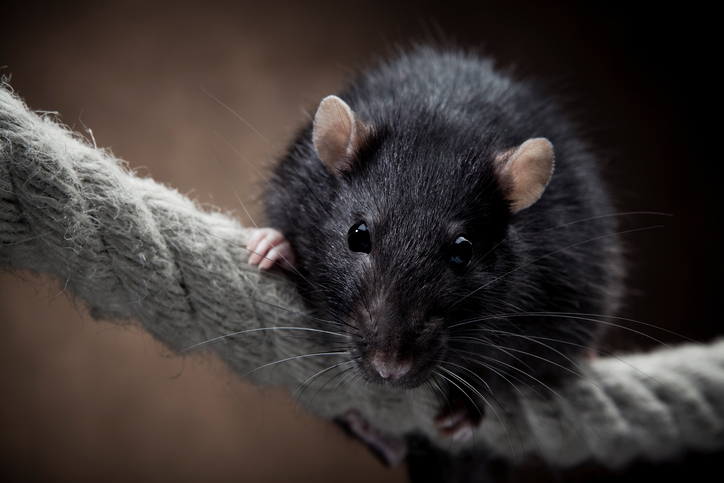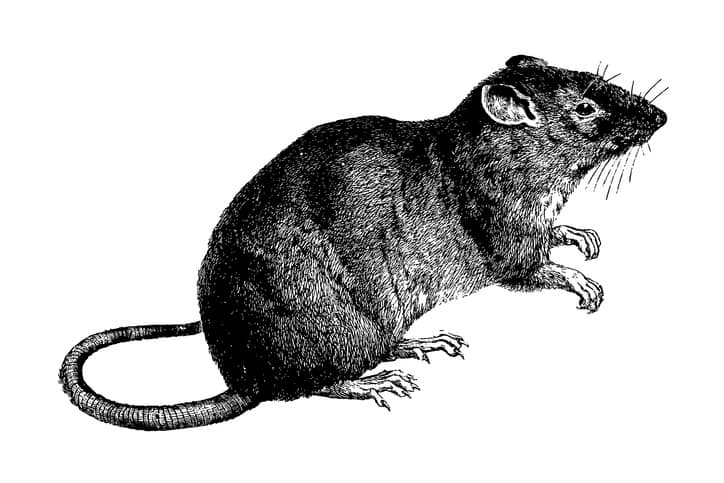Rats: A Global Species, Thanks to Ships

Rats get around.
The international standard ASTM F1099M addresses rat guards for ships, covering the materials, dimensions, and assembly of steel and aluminum rat guards.
The purpose of such guards is implied by their name; rat guards are intended to prevent rats from boarding ships by way of mooring lines. A clear advantage from possessing reliable rat guards is as obvious as the name; they abate the nuisance and/or threats that may emerge with rats present on ships. However, the significance of such technology and sheer importance of its reliability and universality can only be comprehended while considering the proliferation of rats on planet Earth.
Evolution of Rats
To assess how civilization, modernization, and globalization have led to the ubiquity of these worm-tailed mammalian pests, we need to begin long before humans ever walked the earth. The entire class of the Animal Kingdom known as mammals trace their origins back to the therapsids, which branched from a group of reptiles called the synapsids. Therapsids appeared by the middle of the Permian Period (275 to 225 millions of years ago), and throughout the succeeding millions of years, these animals evolved many features indicative of mammals.
This period featured more than a shakeup in phylogeny; it also saw the early breakup of the supercontinent Pangea. By the Triassic Period about 200 million years ago, the continents Laurasia and Gondwanaland had formed. Jump ahead to today’s global map, and the seven continents have an assortment of mammals endemic to their respective lands.
The genus Rattus first emerged about 3.5-6 million years ago, and it was native to the Mediterranean, the Middle East, India, China, Japan, and Southeast Asia. Sometime later, about 2 million years ago, two rat species diverged from a common ancestor. These are Rattus norvegicus and Rattus rattus.
Early Spread of Rats By Ships
R. norvegicus, otherwise known as the Norwegian rat or brown rat, was originally native to northern China (the Norway part is a misnomer). R. rattus, otherwise known as the house rat or black rat, was originally native to India and possibly other Indo-Malayan countries. Brown rats still naturally live in burrows in the plains of China. However, these animals clearly cover a far vaster expanse.
The reason for this is ships. For thousands of years, these two rat species have hitched rides as stowaways on ships, sneaking onto vessels transporting people and goods to new port cities. This continuous process derived from what is known as commensalism, a human-dependent association in which rats live with humans in homes, buildings, and ships, feeding off the refuse and waste of concentrated pockets of civilization.

Invasive species have become a major concern in the Modern Age, so it can be easy to forget that rats have been invasive to Europe for thousands of years. In fact, skeletal remains of R. rattus in the Mediterranean and Europe date back to antiquity. Other bones found in Corsica date to the Fourth Century BCE and in Pompeii to the Second Century BCE. It is even likely that the black rat found its way to Roman-occupied London during the Third Century.
The brown rat voyaged to Europe a little later than the black rat, but it still has a long history outside of Asia. Norway rat bones have been discovered in sites in northern Germany dating to the Ninth Century, and, in his 1553 book Historiae animalium, Swiss naturalist Conrad Gesner illustrated the Norway rat.
Burgeoning in a Globalized Time
By the Sixteenth Century, these two rat species had spread throughout Europe, but they would soon flourish in new lands. Explorers set their sights on the Americas, and, as Europeans traveled to the New World, their baggage traversed the sea as well. Black rats reached the New World in the Sixteenth Century. Norway rats came to North America around 1755, transferred by the ships of the new settlers. In fact, by the time the United States was founded, there were reports of rats all over the east coast of the United States.
It’s crucial to stress that the heightened volume of transportation around this time accelerated the spread of rats. A greater number of ships began to explore the world, facilitating the exchange of goods to the world’s port cities. The onset of the Modern Age teased a hint of the globalization that was to come, and the global rat population surely did not miss out on this opportunity. As the last few centuries passed, an interconnected world made numerous processes of civilization easier, but it also helped rats flourish as our perennial pests.

Interestingly, while the black rat was the first pest, the first to Europe, and the first to the Americas, it has largely been displaced by the Norway rat, which is known to be far more aggressive. And, with the Norway rat reaching sexual maturity at only 3 months, breeding year-round, gestating for less than one month, and birthing an average of 10 offspring at once, it hardly comes as a shock that rats have become so abundant.
In fact, the Norway rat currently is found on 6 of the 7 continents on Earth. Ships do travel to Antarctica, but they are far less frequent than those bound to locations that are more habitable and rat-plenty.
Modern Rats
Certain modern cities are notorious for their rat populations. Take, for example, New York City, a place nearly as synonymous with rats as it is with pizza (and sometimes both simultaneously). New York has acted as a major port city and economic center for hundreds of years, and it has nearly been the epicenter of trade and commerce throughout recent history—a time dominated by a swelling human population and, in turn, increased industry, production, and waste. Because of this, Manhattan and its outer boroughs are infested with brown rats.

The exact rat count of New York is up for debate, with there being at a minimum 250,000 Norway rats—this estimate based on a survey taken back in 1949—and unlikely estimates up to tens of millions. A recent popular estimate has placed the population around 2 million. However, legend says that there’s one of these furry pests in New York City for every person, over 8 million in total.
Regardless of the total count, one thing is clear: there’s a lot of rats in NYC. Besides being a nuisance, these pests can be dangerous, carrying disease and acting as the harbingers of trouble. This should hardly come as a surprise, as rats were responsible for the Bubonic Plague, which killed over 20 million people in the Fourteenth Century. While rats commonly avoid people, they are known to occasionally bite, children in particular. Rat bites can cause fever, tetanus, and even hazardous diseases, like leptospirosis and Hantavirus.
Rat Guards
These threats are looming in virtually every metropolitan area, and we simply accept them as part of urban living. However, there is no intrinsic aspect of any facet of society that forces humans to live alongside rats. In fact, rats are invasive to a place like New York. They are only there because of the lack of foresight in the past.
Some of the earliest patents for rat guards didn’t appear until the early Twentieth Century, and a patent for rat guards for mooring lines, like those covered in the ASTM F1099M standard, is from 1960. This means that this type of technology was not widely implemented until after rats had shared the human accomplishment of becoming a global species. If rat guards had been more of a priority during the early stages of globalization, it is highly possible that these creatures would be nothing more than rodents burrowing in the plains of China.

Even though the damage is irreversible and rat populations have rooted themselves worldwide, rat guards can still help prevent the spread of brown rats to places where their dominance has not reached its peak. For New York, this hardly makes a difference, as Norway rats in the city are known to be quite dominant, and, once a population is in place, it retains its status. In fact, there are distinct populations of rats between uptown and downtown Manhattan.
For other places though, the guiding hand of modern knowledge and practices helps make sure that these pests remained confined to their current locations. In fact, this is why standardization is so important. It can be challenging to gaze into the past and see little more than a heap of mistakes and shortcomings. However, shared specifications and practices, carefully written with lessons learned from these errors in mind, help assure a positive forward trajectory for industry, people, and society as a whole.
ASTM F1099M simply standardizes guards that prevent rats from entering ships. However, rat guards are barriers that help keep the world stable.






